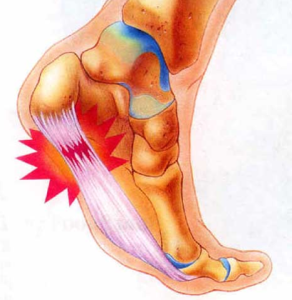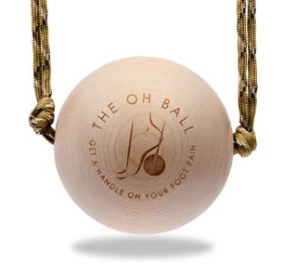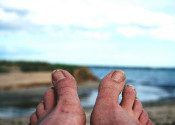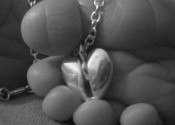Best Foot Massager for Plantar Fasciitis
Before we get into finding the best foot massager for plantar fasciitis, let’s start by exploring what plantar fasciitis is.
What is Plantar Fasciitis?
 Plantar fasciitis is a common cause of heal pain. It’s manifested as pain in lower calcaneus, and it commonly occurs as a result of accumulated damage caused by deterioration (degeneration) of collagen fibers of the fascia. It belongs to the group of defects known as overuse injuries. Basically, it’s a stabbing feeling in the heel of your foot. It occurs in one foot at a time, but it can occur in both simultaneously.
Plantar fasciitis is a common cause of heal pain. It’s manifested as pain in lower calcaneus, and it commonly occurs as a result of accumulated damage caused by deterioration (degeneration) of collagen fibers of the fascia. It belongs to the group of defects known as overuse injuries. Basically, it’s a stabbing feeling in the heel of your foot. It occurs in one foot at a time, but it can occur in both simultaneously.
Plantar fascia is the tissue located under the skin on the soles of your feet. It has three parts: middle, medial and lateral. The middle section is the most important, and this is a strong triangular tendon plate that starts with the heel bone (Latin: calcaneus) and it is directed forward.
Treating Plantar Fasciitis
This condition should not be ignored. Ignoring the painful symptoms may eventually result in chronic heel pain, hindering your everyday life activities and restricting your mobility. Fortunately, there are ways to help make your feet feel better. Often, people find that massaging your foot helps reduce pain. There are a huge variety of electric foot massagers available on the market. So what is the best foot massager for plantar fasciitis? Without doing a detailed comparison of good electric foot massagers for plantar fasciitis, a quick suggestion is to try starting with the Carepeutic KH385L-B Deluxe Hand-touch Kneading Rolling Shiatsu Foot Massager.
Best Foot Massager for Plantar Fasciitis
Something like the Oh Ball or another mechanical foot massager might help as well, if you don’t want a full-blown machine.
Other ways to treat plantar fasciitis include elevating your sore feet, applying ice for 15-20 minutes three to four times a day, or even massaging your foot with ice. Stretching your arches and adding arch supports to your shoes might help as well. (source) There are also medicines that may help, and even a potential option for surgery in rare cases.
Generally, treatment is primarily directed toward identifying and correcting predisposing factors. For example, if the cause is lowered or concave foot, then a specialist will immediately prescribe orthopedic insoles to correct such anatomical deviations.
Stretching exercises are recommended only if the cause is the excessive tension of the Achilles tendon. Foot massage is very effective during the fight against plantar fasciitis.
To recover completely, after even a mild cases of plantar fasciitis, it’s sometimes recommended to stop all possible activities for at least 4 weeks. After surgical treatment, it is necessary to carry out rehabilitation for eight to twelve weeks. After that, you can gradually begin with sports or working activities, but be aware your body will need at least four to five months for full recovery after surgery.
Causes
Causes are divided into two groups: external and internal causes.
External causes are a reflection of the environment, hence they are easier to control and mitigate. One of the most common external cause of Plantar Fasciitis is wearing the “wrong” type of shoes, or wearing poorly fitting shoes. Other external causes are mistakes in athletic training, sudden changes in training intensity, or the duration or frequency of training or running over rough terrain.
When it comes to internal causes, the most common is extended or excessive pronation of the foot (rotating your foot inward while moving). Excessive tension of the Achilles tendon also puts excessive pressure on the plantar fascia, causing the development of plantar fasciitis. Stretching exercises are often helpful for this last cause.
The highest risk group is women between 40 and 60 years old. In addition, people who are overweight put more pressure on their feet and are also at higher risk. Activities like running and ballet that put pressure on your feet can also cause plantar fasciitis.
Disclaimer: I am not a medical professional of any sort, and nothing on this page should be construed as medical advice. I’m just trying to help you find the best foot massager for plantar fasciitis for your particular scenario. As always, be sure to see your doctor before beginning any medical treatment or course of action.
For further reading, there’s an insanely long article about this ailment located here.




Hi.Are you selling this I-need foot masager?Im from Manila,Philippines.I really have a terrible pain in both my feet especially my left foot. I also found out that i had a calcenous spur that’s why Im so desperately researching on how to deal with my pain.Im 37 years old already 5ft tall weighing 140 pounds thanks.
Hi Charisse, I’m not selling it directly, but you should be able to find on Amazon via the link in the post above. Thanks for commenting, and I hope your feet feel better!